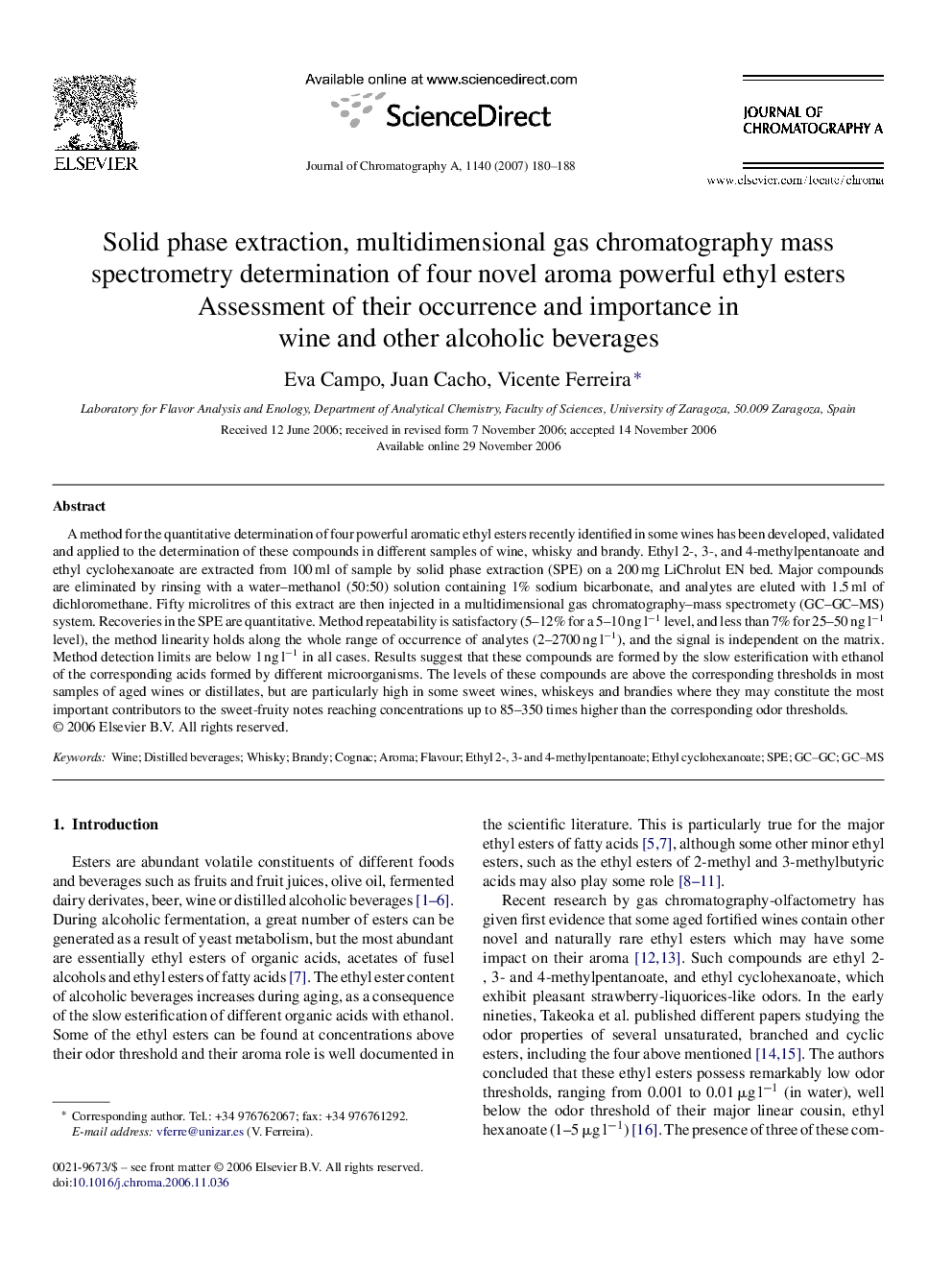| Article ID | Journal | Published Year | Pages | File Type |
|---|---|---|---|---|
| 1209394 | Journal of Chromatography A | 2007 | 9 Pages |
A method for the quantitative determination of four powerful aromatic ethyl esters recently identified in some wines has been developed, validated and applied to the determination of these compounds in different samples of wine, whisky and brandy. Ethyl 2-, 3-, and 4-methylpentanoate and ethyl cyclohexanoate are extracted from 100 ml of sample by solid phase extraction (SPE) on a 200 mg LiChrolut EN bed. Major compounds are eliminated by rinsing with a water–methanol (50:50) solution containing 1% sodium bicarbonate, and analytes are eluted with 1.5 ml of dichloromethane. Fifty microlitres of this extract are then injected in a multidimensional gas chromatography–mass spectromety (GC–GC–MS) system. Recoveries in the SPE are quantitative. Method repeatability is satisfactory (5–12% for a 5–10 ng l−1 level, and less than 7% for 25–50 ng l−1 level), the method linearity holds along the whole range of occurrence of analytes (2–2700 ng l−1), and the signal is independent on the matrix. Method detection limits are below 1 ng l−1 in all cases. Results suggest that these compounds are formed by the slow esterification with ethanol of the corresponding acids formed by different microorganisms. The levels of these compounds are above the corresponding thresholds in most samples of aged wines or distillates, but are particularly high in some sweet wines, whiskeys and brandies where they may constitute the most important contributors to the sweet-fruity notes reaching concentrations up to 85–350 times higher than the corresponding odor thresholds.
